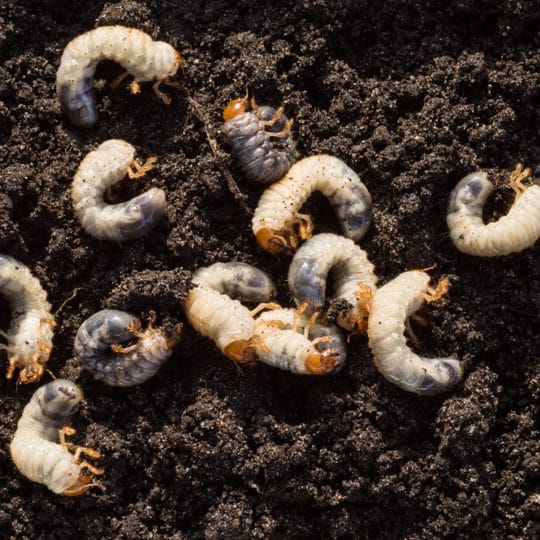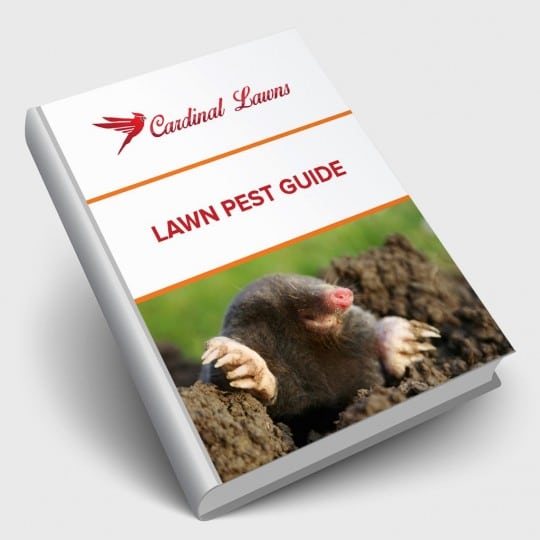Grub Control Methods
And When to Use Them
Posted
August 12, 2021

Got grubs? If you do, it could turn into more than just a larvae infestation in your lawn. Try these grub control methods to save your lawn from future pest problems.
Signs of Grubs in Your Lawn
If your lawn is frequently visited by birds, skunks, raccoons, and other wildlife, chances are there’s something there they all like to eat—like grubs. And the more animals you see, the more grubs you probably have. Not only is this bad for your grass, but when wildlife is attracted to your lawn, they may look for a close place to nest—like among your plants, under your shed, or in your attic. Now you have a grass/grub/wildlife/property damage issue.
While you may not catch the animals in the act, you’ll see the following signs:
- Overturned patches of grass
- Small, lumpy patches of dead grass
- Brown spots in the lawn
- C-shaped white grubs two inches below the soil surface
If you think the grubs are bad, just wait until they become adults. Japanese beetles transform from root-chewing grubs to leaf-destroyers. The best way to prevent all of this is to get rid of the grubs. Making your lawn less desirable helps do away with the wildlife. Plus, fewer grubs in your grass means it can grow lush without being chewed up. Then the rest of your garden will thank you for saving it from beetles in the summer.
Lawn Grub Control Methods
There are several ways of dealing with grubs. First, it’s important to make sure you have a grub problem. Dig up a few two-inch samples of turf around a bare dry spot of soil and look for the wiggly white grubs. They’re most likely to be found in the spring, and they’re likely to turn into beetles by summer. If you see a few, it shouldn’t be a problem. But if they take up a majority of the area, it’s time to act.
Usually, preventing pests is as easy as properly maintaining your lawn. But grubs and beetles prefer the irrigated turf of well-manicured golf courses, athletic fields, and home lawns. For once, overly dry lawns are a way of preventing grubs from moving in. However, you still want to properly mow and fertilize your lawn to help promote root growth and limit weeds.
There are many grub control products on the market. You’ll want to look for one specifically formulated for grubs. Keep in mind that any preventative product is not designed to work right away. It may not have any effects until the following fall and spring. However, products formulated to treat grubs already in the lawn also need to be applied appropriately for best results.
For more information on the right time and product to treat your lawn or prevent grubs in the future, contact the lawn care specialists at Cardinal Lawns. We can help evaluate your current situation and determine the best course of action.

Download Your FREE Lawn Pest Guide
Pests become most prevalent during the heat and humidity of summer. Take some time to learn about the signs of infestations before any damage can be caused to your landscape. This handy guide will teach you how to spot common lawn pests and how to keep them from causing harm to you and your property.